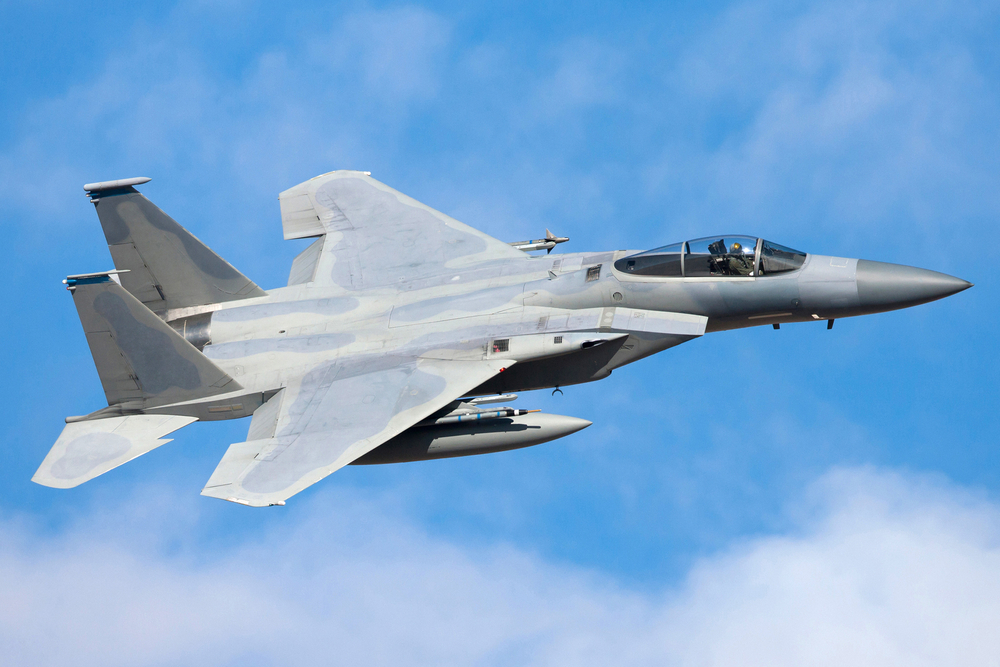DARPA will train AIs to ace close-combat aerial dogfights
AI systems will aid human fighter jet pilots in performing "split-second manoeuvring" when in the danger zone


US military R&D arm, the Defense Advanced Research Projects Agency (DARPA), is aiming to train artificial intelligence (AI) to autonomously engage in close-range aerial duals.
At the moment, no AI system can outwit a human fighter jet pilot in high-speed, high-G dogfights, despite AI being able to trounce humans in things like professional poker, computer gaming, and in the ancient Chinese board game Go.
But DARPA's Air Combat Evolution (ACE) programme aims to change that by adding more AI-powered technology into fighter jets, which will work in collaboration with human pilots in dogfighting scenarios.
"Being able to trust autonomy is critical as we move toward a future of warfare involving manned platforms fighting alongside unmanned systems," said Lieutenant Colonel Dan Javorsek, ACE program manager at DARPA's Strategic Technology Office.
"We envision a future in which AI handles the split-second manoeuvring during within-visual-range dogfights, keeping pilots safer and more effective as they orchestrate large numbers of unmanned systems into a web of overwhelming combat effects."
By training AI in the rules of dogfighting in the same way new fighter pilots are taught, the ACE programme hopes to have systems that can take care of things such as avoiding fire from enemy jets. In doing so, pilots can apply their abilities to situations unfolding in a larger aerial battle, such as firing weapons and executing commands in the midst of combat.
The use of AI in this fashion is part of DARPA's aim to create "mosaic warfare" by which military combat is conducted by both human-controlled machines and AI-powered systems.
Get the ITPro daily newsletter
Sign up today and you will receive a free copy of our Future Focus 2025 report - the leading guidance on AI, cybersecurity and other IT challenges as per 700+ senior executives
This approach plans to have simple smart systems networked together, rather than have the military create a single autonomous advanced platform or war machine.
The idea is that if one part of such an AI-centric network is destroyed, the rest can still work as a whole and that expendable part can be replaced and, as such, make combat more lethal for the US military's enemies while cheaper for it in terms of human and monetary costs.
"Linking together manned aircraft with significantly cheaper unmanned systems creates a "mosaic" where the individual "pieces" can easily be recomposed to create different effects or quickly replaced if destroyed, resulting in a more resilient warfighting capability," DARPA explained.
With the ACE programme, DARPA will start off training the AI systems in the basics of dogfighting under the watchful eye of instructors. Only when human pilots are confident in the AI development will such autonomous systems be put into more challenging scenarios.
"Following virtual testing, we plan to demonstrate the dogfighting algorithms on sub-scale aircraft leading ultimately to live, full-scale manned-unmanned team dogfighting with operationally representative aircraft," Javorsek added.
While the use of AI in air combat is an example of digital transformation at its most cutting edge, there are some who oppose the idea of autonomous systems being used in warfare.
A backlash from its workers saw Google pull out of its involvement in the Pentagon's Project Maven, which planned to use AI technology to improve drone performance.
Conversely, Microsoft has remained in staunch support of supplying its technology, including AI tech, to the US military, even though chief executive Satya Nadella has touted the need for an ethical approach to AI development.
Roland is a passionate newshound whose journalism training initially involved a broadcast specialism, but he’s since found his home in breaking news stories online and in print.
He held a freelance news editor position at ITPro for a number of years after his lengthy stint writing news, analysis, features, and columns for The Inquirer, V3, and Computing. He was also the news editor at Silicon UK before joining Tom’s Guide in April 2020 where he started as the UK Editor and now assumes the role of Managing Editor of News.
Roland’s career has seen him develop expertise in both consumer and business technology, and during his freelance days, he dabbled in the world of automotive and gaming journalism, too.
-
 Third time lucky? Microsoft finally begins roll-out of controversial Recall feature
Third time lucky? Microsoft finally begins roll-out of controversial Recall featureNews The Windows Recall feature has been plagued by setbacks and backlash from security professionals
By Emma Woollacott Published
-
 The UK government wants quantum technology out of the lab and in the hands of enterprises
The UK government wants quantum technology out of the lab and in the hands of enterprisesNews The UK government has unveiled plans to invest £121 million in quantum computing projects in an effort to drive real-world applications and adoption rates.
By Emma Woollacott Published